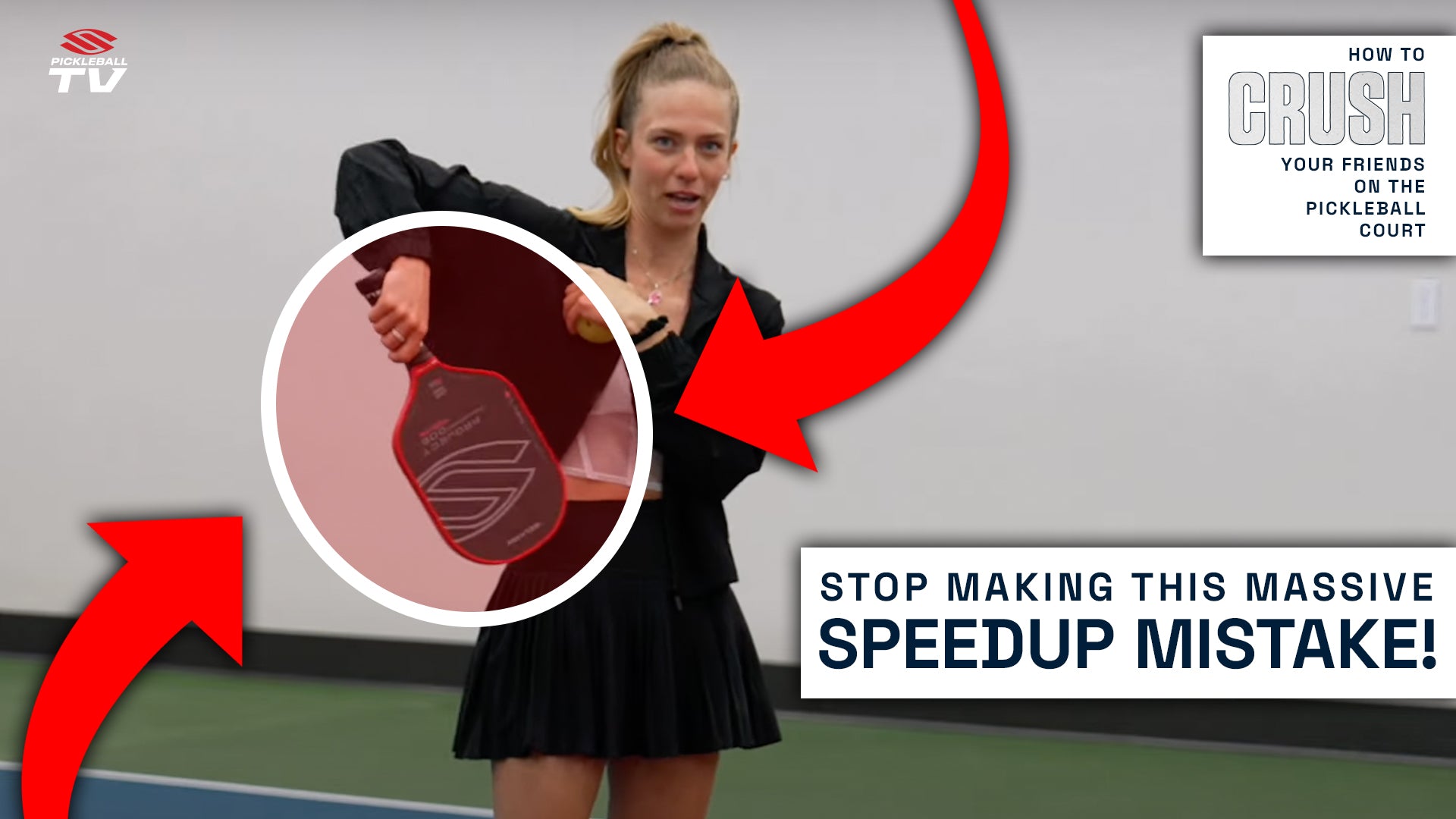
Just as the name suggests, a speed-up is a shot in which players hit a high-bouncing ball with force to make the game move faster.
Speed-ups are a necessary part of the game in higher-level pickleball because they allow players to catch their opponents off guard, setting themselves up for a winning rally.
In the latest episode of her “How to Crush your Friends on the Pickleball Course” course on Selkirk TV, professional pickleball team owner Kaitlyn Kerr explains when you should use a speed up and how they can earn you points.
When to use a speed-up
Although you may win a point on a well-executed speed-up, this is generally not the goal. Instead, you want to use a speed-up to set yourself up for a winning rally by catching your opponent off guard.
That’s why it’s best to use your speed up sparingly, and not on every shot sent your way. The best moments to use your speed up are when your opponent is out of position on the court or they are not fully reset to their ready position.
So, if you notice your opponent does not have their paddle out in front of their body and you receive a high-bouncing ball, consider speeding up. It will be much more difficult for your opponent to defend themselves, giving a greater likelihood of an error.
Where to place your speed-up
It’s not enough to just speed up the ball and hope it works. It’s important to place your speed up in an area that is difficult for your opponent to defend.
For example, try aiming at the shoulder of your opponent’s paddle arm. This is often referred to as a chicken arm or chicken wing, and it forces your opponent to reset from a very uncomfortable position.
Another area to target is your opponent’s hip on their dominant side. Most players like to counter and reset with their backhand. If you target their dominant hip, you are forcing them to slide their arm to an uncomfortable position or flip their paddle over to hit a forehand reset.
How to practice your speed-ups
Grab a drilling partner and set up at the kitchen line on opposite sides of the court. Begin dinking back and forth, making sure to move each other from side to side.
When either of you receives a high-bouncing ball, try a speed-up. Remember to aim for a specific target on your opponent’s body.
Take note of what was successful. Did you catch them in an awkward position? If so, did it cause an error? If not, how can you hit the ball differently to hit your target next time?
If you don’t win the point off your first speed-up, you’ll likely receive a pop-up. Take the ball out of the air and aim a hard-placed shot at your opponent’s feet. Take note of how a well-placed speed-up can set you up for a winning rally.
Download the Selkirk TV app HERE to watch the complete episode and many other Selkirk TV original shows, podcasts, lesson series from the pros, and much more.







